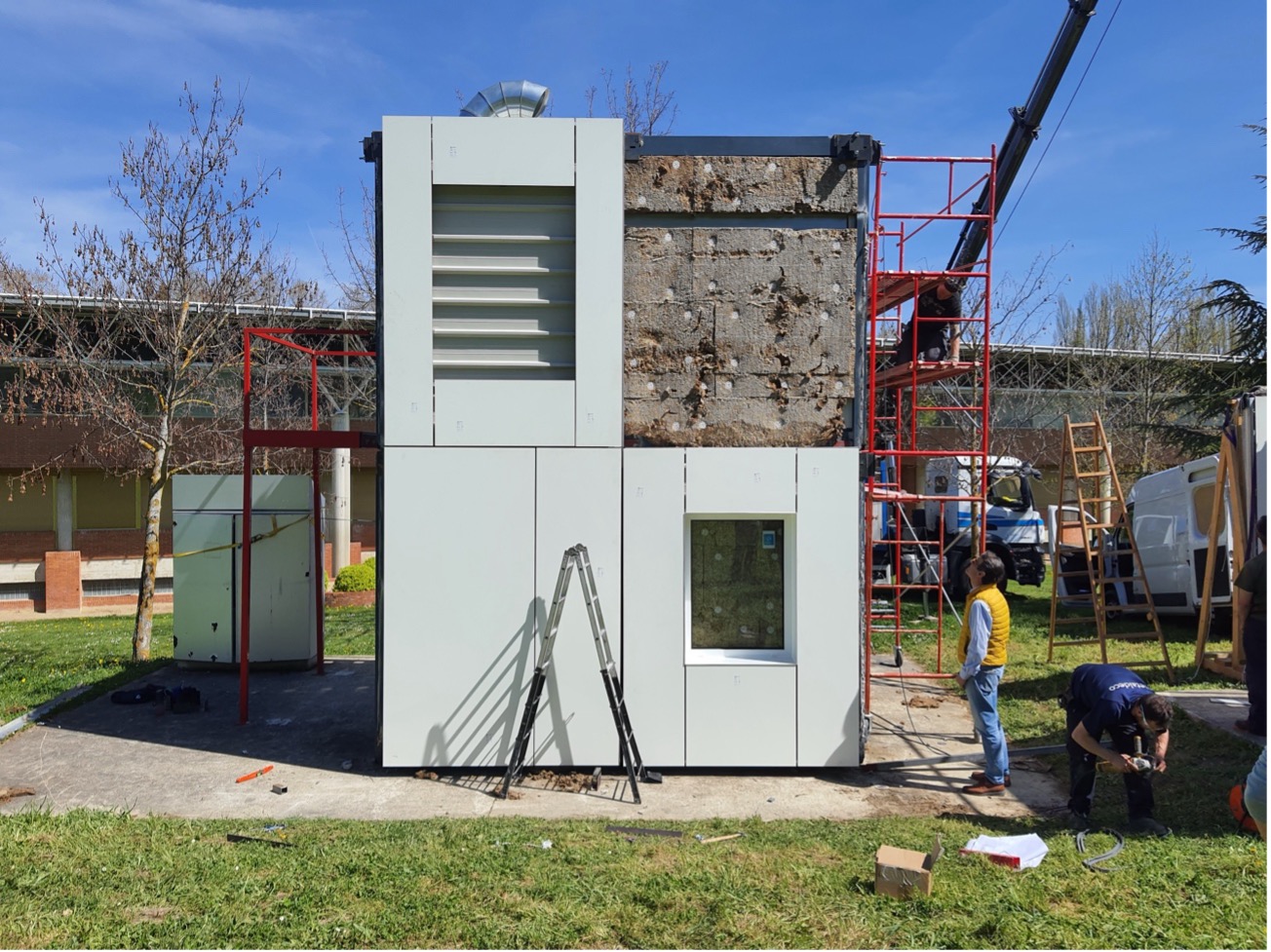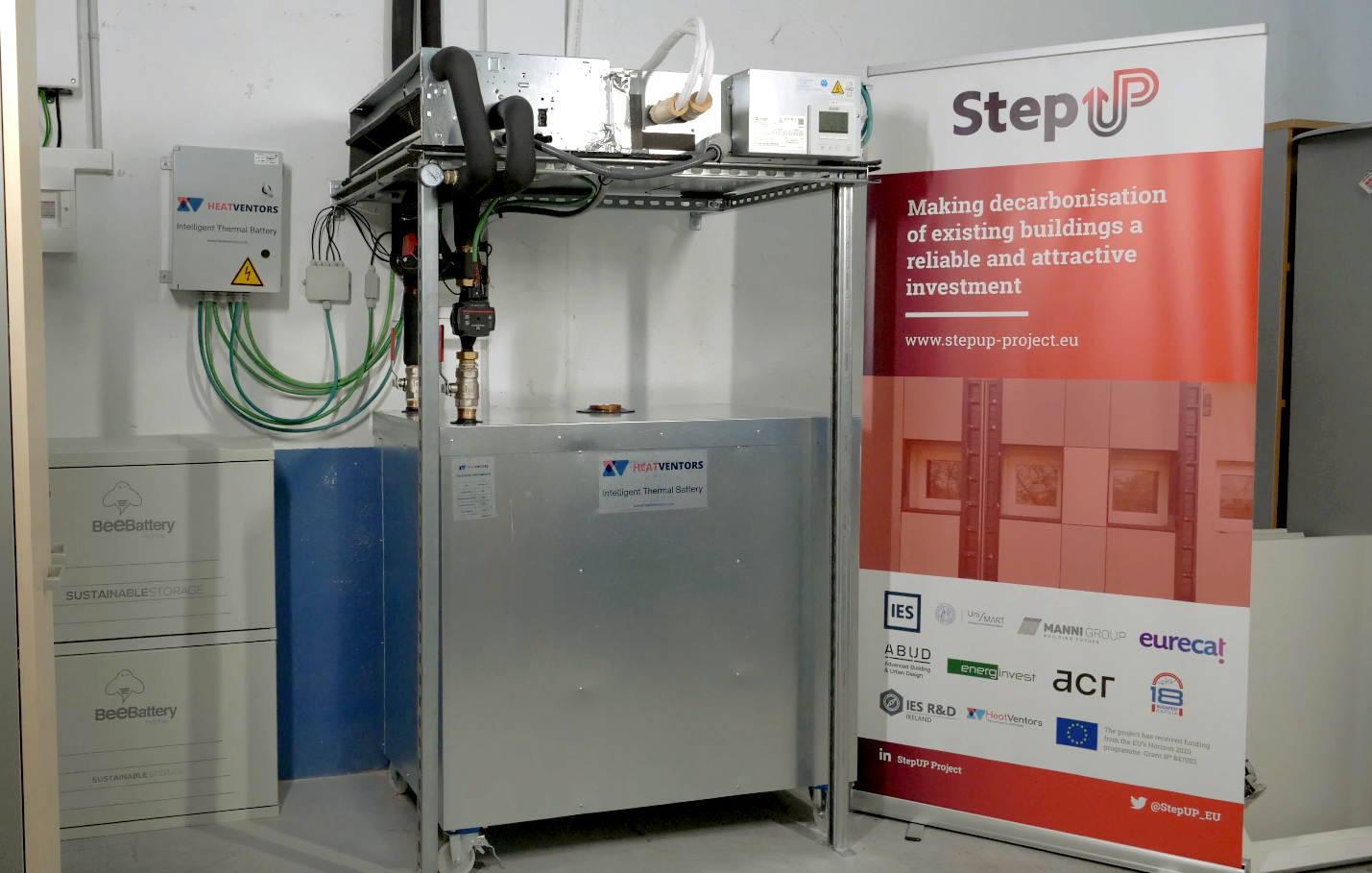Spanish Pilot
Plug & play technologies’ impact simulation for dwellings
Demonstration of StepUP technologies separately in R&D facilities and a multi-functional building
Pamplona, Spain
Two pilots were designed to demonstrate the StepUP technologies for deep renovation in multi-owner residential buildings and correlate the results with Monasterio de Urdax building in Pamplona.

Façade renovation at the University of Navarra
The StepUP façade P&P solution have been deployed and validated in two-story building part of the University of Navarra R&D facilities. These facilities simulate real building spaces and serve to showcase the time required for the P&P envelope installation and its thermal performance impact on a residential building.
The impact has been evaluated in a digital twin of a multi-owner apartment block in Pamplona to correlate the impact of the Plug & Play solutions on the pilots to multi-family residential dwellings.
- Unique opportunity to evaluate the installation process, particularly in terms of addressing corner elements and integrating third-party technologies.
- Installation of ten regular modules (five per floor) and eight corner modules (four per floor) per each test cell
Integration of a refrigeration system in a multifunctional building
The second Spanish Pilot was a multi-use building owned by ACR in Pamplona, aimed to integrate a cooling system with storage capacity for the server room into the existing HVAC system, without modifying the refrigerant circuit.
The StepUP Plug & Play active system solution, a PCM storage solution allowing flexible consumption of energy, together with PV panels, has been installed in an ACR Group’s multi-functional building with simultaneous heating and cooling needs.
This innovative approach demonstrated the feasibility of integrating a refrigeration system without altering existing infrastructure. The development of the compact unit, combining the internal HVAC unit and the charging heat exchanger, showcased the potential for high-cooling-demand applications.

- Unique air-based cooling approach, using the HeatTank technology.
- Tank capable of storing cool energy through Phase Change Materials (PCM)
- Installation in less than a week time
Key pilot outcomes
The Spanish Pilot has contributed significantly to the understanding of StepUP Plug & Play technologies.
It complements the results from the Hungarian Pilot and has opened new avenues for exploring energy-efficient solutions in building renovation.
Improved installation ratios
The Plug & Play façade solution showed improved installation ratios compared to conventional ventilated façades. In fact, the pilot project achieved a panel installation rate 20% higher than the average rate for a conventional ventilated façades.
Real-time data collection & analysis
Facilitated through IT StepUP LEAN tools, allowing for accurate measurement of execution times on-site.
Continuous improvement
The pilot highlighted areas for improvement for the Plug & Play façade, such as increasing the flexibility of corner modules and simplifying the fixing system between panels to optimize the time of site.
Cooling technology validation
The integration of the HeatTank technology provided a feasible solution for cooling applications in high-demand environments.

 This project has received funding from the European Union’s Horizon 2020 research and innovation programme under grant agreement no. 847053.
This project has received funding from the European Union’s Horizon 2020 research and innovation programme under grant agreement no. 847053.
This website reflects only the author’s views. The European Climate, Infrastructure and Environment Executive Agency is not responsible for any use that may be made of the information it contains.
